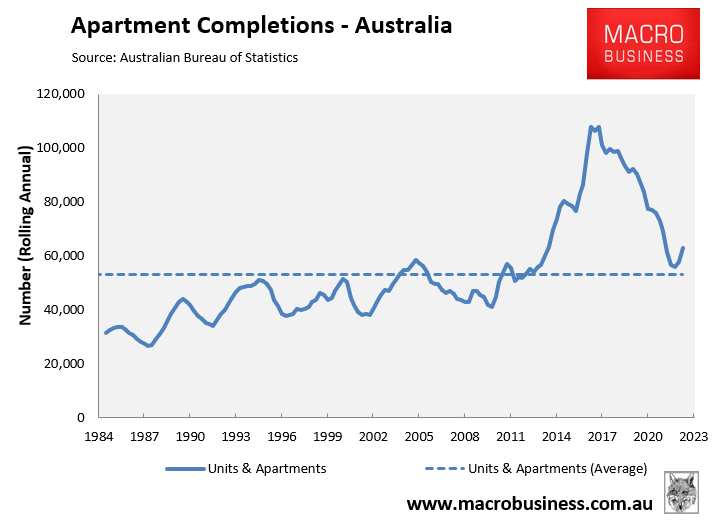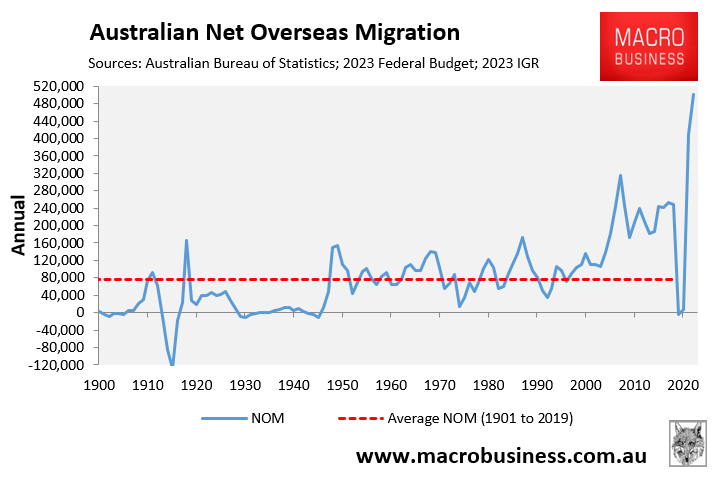Last decade witnessed an unprecedented boom in high-rise apartments, concentrated in Australia’s major capital cities:

This boom in apartments brought with it a swag of problems, including widespread flammable cladding, structural cracking, balcony defects, and leaks.
These faults have left thousands of apartment owners and governments facing large rectification costs totalling in the billions of dollars.
“Thousands and thousands of apartments have serious defects in their buildings. [The problem] is enormous”, warned building regulation consultant Bronwyn Weir.
“We have what is now you know, a systemic failure that is quite difficult to unravel. Some of these buildings could potentially be a write-off”, she warned.
Engineer Leith Dawes likewise warned that buying an off-the-plan apartment in Australia has become a game of “Russian roulette”, in reference to the widespread problems, many of which go unreported.
Last week we reported how the formerly crowned “world’s best tall building” – the One Central Park apartment complex in Sydney – is riddled with defects only a decade after construction finished, requiring costly repairs.
On Wednesday, The Age reported that a 12-storey Melbourne apartment development, built only five years ago, has been marked for demolition.
Deputy Lord Mayor Nicholas Reece, who has frequently complained about shoddy high-rise development around Melbourne, is scathing:
“We cannot let Melbourne become a city of disposable buildings – a city where new buildings are built on the cheap, to be knocked down every 20 years or so”.
“We will end up with a throwaway city of junk buildings, as well as an unacceptable environmental cost”.
Reece added that in order to reduce the carbon footprint of the City of Melbourne, it was essential to implement sustainable construction standards, as buildings are responsible for 66% of all emissions across the city centre.
As we know, the Albanese government has a target to build 1.2 million homes in five years, with most of these slated to be high-rise apartments.
In addition, the 2023 Intergeneration Report predicted that historically high net overseas migration would grow Australia’s population by 14 million in just 40 years, necessitating the construction of millions of apartments in high-rise complexes.
A prolonged period of rapid apartment construction will deliver similar results to the last decade.
Build quality will be degraded and thousands more substandard high-rise apartments will be built across our major cities.
Australia will build huge volumes of defective high-rise slums purely to accommodate the turbo-charged net overseas migration of the federal government that few Australians actually want nor support.

The federal government should instead reduce net overseas migration to a level commensurate with the nation’s capacity to provide high-quality housing and infrastructure, as well as the carrying capacity of the natural environment (including water supplies).
Otherwise, our children and grandchildren face a future living in poorly built high-rise slums.

